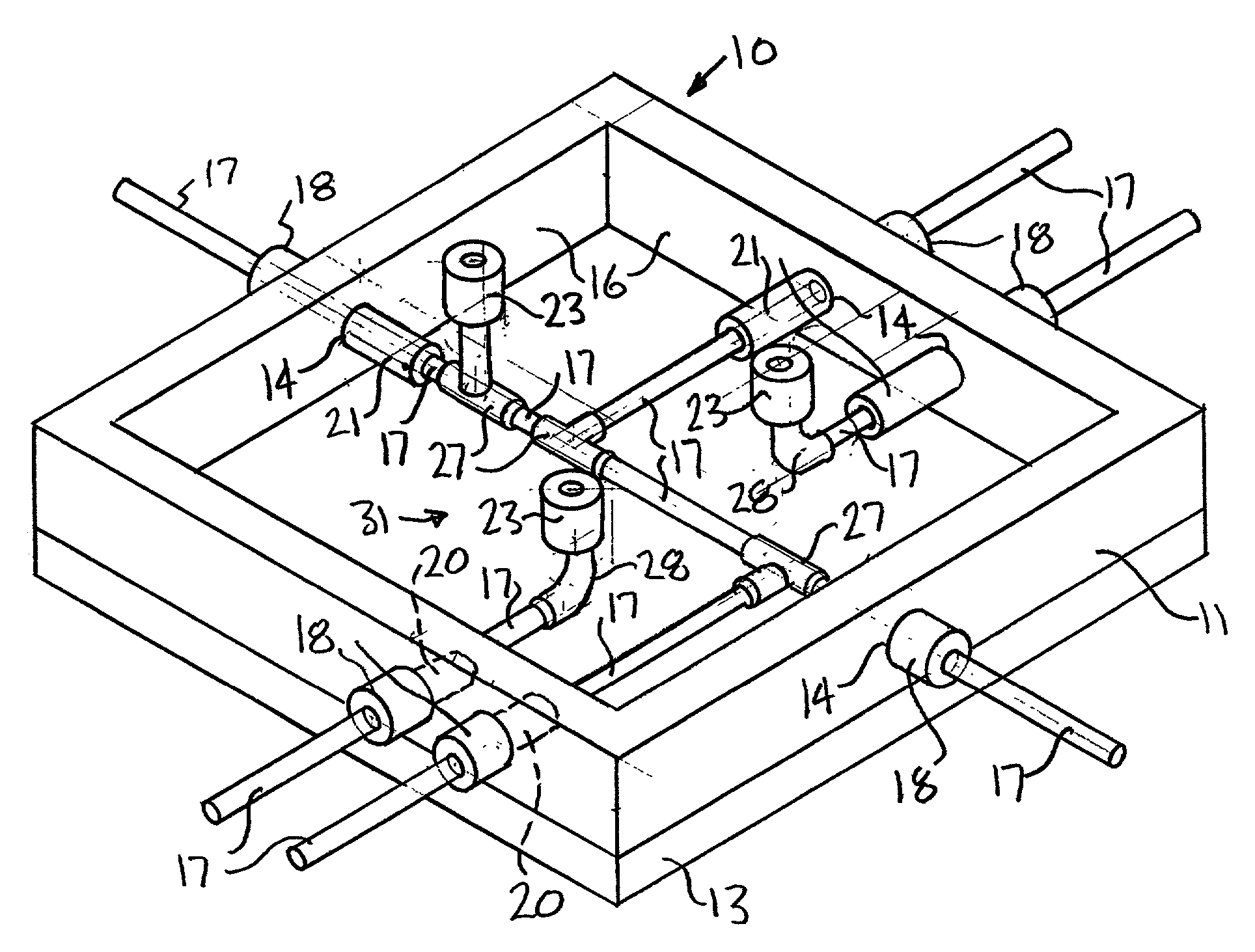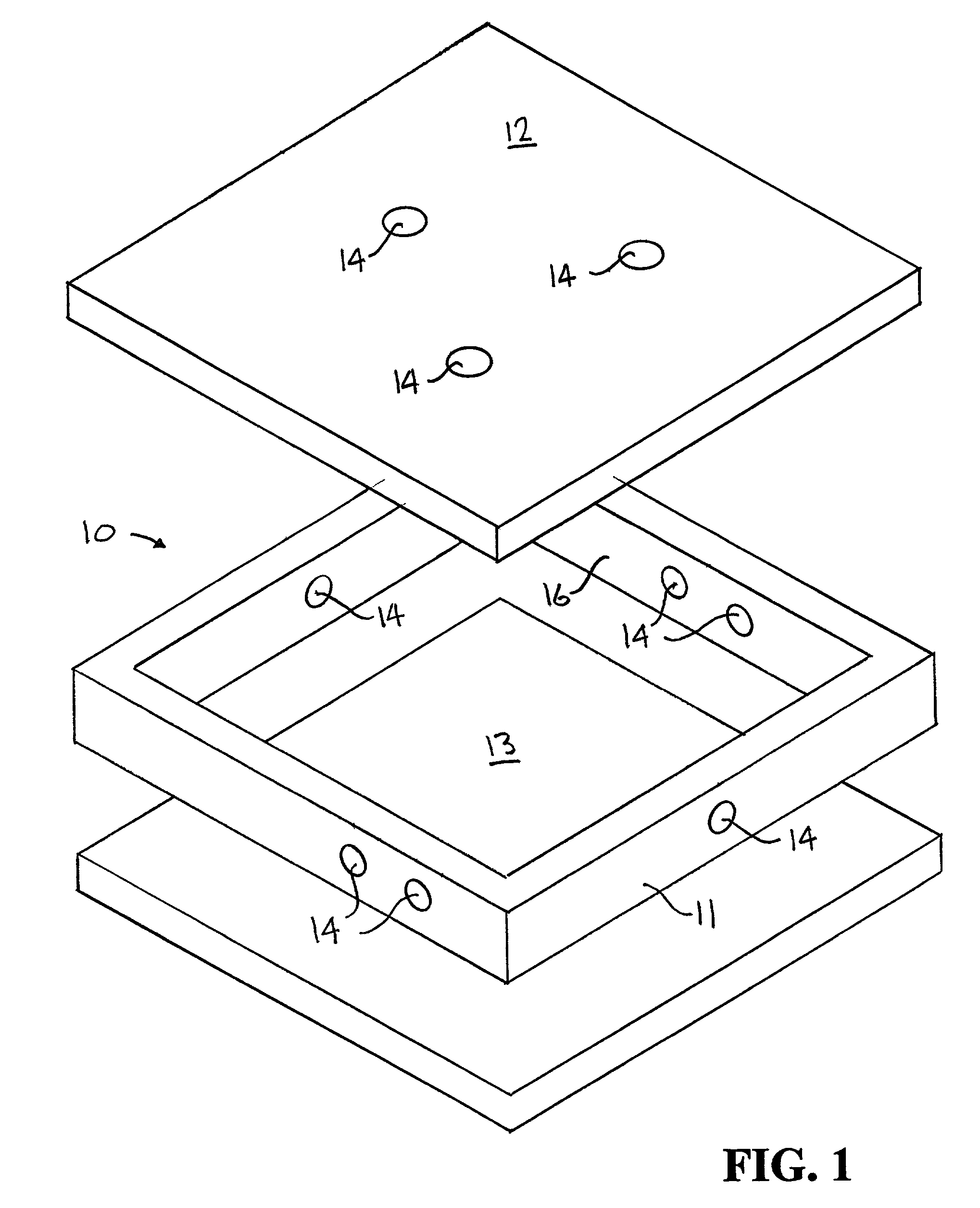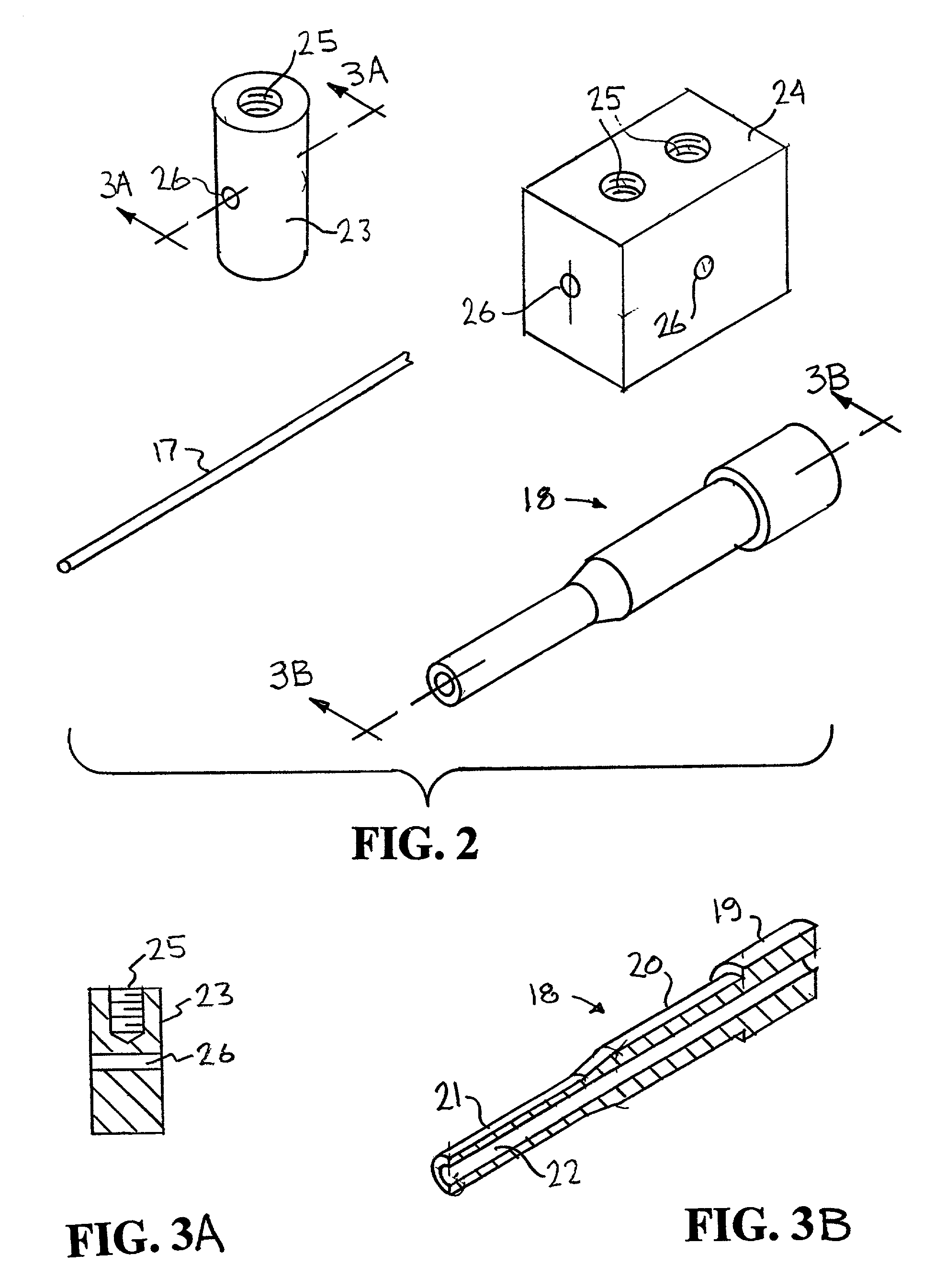Polymer-based platform for microfluidic systems
a technology of microfluidic systems and polymer-based platforms, which is applied in the field of microfluidic systems, can solve the problems of little development in the packaging of microfluidic systems for the combined operation of such microdevices, and the difficulty of producing truly integrated microfluidic systems, so as to improve device yield, feed a sample fluid efficiently, and save tim
- Summary
- Abstract
- Description
- Claims
- Application Information
AI Technical Summary
Benefits of technology
Problems solved by technology
Method used
Image
Examples
Embodiment Construction
[0026]The present invention is directed to methods of forming polymer-based microfluidic system platform structures and integrated microfluidic systems utilizing such platform structures. As used herein and in the claims, the term “microfluidic system,” as well as “microfluidic network” and “microfluidic flow path network,” generally refer to both micro-scale fluidic systems (micron range dimensions), and meso-scale fluidic systems (greater than micron range dimensions). It is appreciated that in both micro- and meso-scales, fluid volumes transferred through microfluidic systems are typically in the order of microliters to milliliters. Furthermore, meso-scale is understood to be the intermediate level between macro and micro-scales. Thus meso-scale features serve as an interface between macro and micro mediums to enable direct exchange and interaction with a user, e.g. receiving fluid samples via pipette.
[0027]The polymer-based microfluidic system platform of the present invention s...
PUM
| Property | Measurement | Unit |
|---|---|---|
| temperatures | aaaaa | aaaaa |
| width | aaaaa | aaaaa |
| diameters | aaaaa | aaaaa |
Abstract
Description
Claims
Application Information
 Login to View More
Login to View More - R&D
- Intellectual Property
- Life Sciences
- Materials
- Tech Scout
- Unparalleled Data Quality
- Higher Quality Content
- 60% Fewer Hallucinations
Browse by: Latest US Patents, China's latest patents, Technical Efficacy Thesaurus, Application Domain, Technology Topic, Popular Technical Reports.
© 2025 PatSnap. All rights reserved.Legal|Privacy policy|Modern Slavery Act Transparency Statement|Sitemap|About US| Contact US: help@patsnap.com



